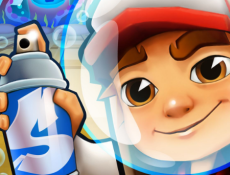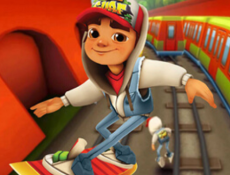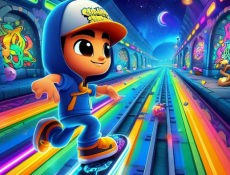Subway Surfers turns the everyday urban environment into a vibrant playground for the adventurous spirit. Players step into the sneakers of mischievous artists who navigate the subway systems of the world’s most iconic cities. As they sprint along the tracks, they collect coins, dodge barriers, and evade the ever-persistent security guard and his canine companion. The game’s core thrill lies in its fluid movement and the rhythmic tapping that guides these urban explorers over and under obstacles, through buzzing train cars, and across busy platforms.
A Dynamic Backdrop of Global Cities
What sets Subway Surfers apart is its globetrotting nature. Every few weeks, the game shifts to a new city, painting its levels with the cultural hues and landmarks of places like Rio, Istanbul, and Berlin. This keeps the gameplay aesthetically fresh and gives players a sense of travel and discovery. Each city brings its own flavor to the tracks, with themed graffiti, unique collectibles, and localized hoverboards, making every run a new spectacle.
The Artistry of Dodging and Dashing
At its heart, Subway Surfers is about mastering the art of motion. The gameplay might seem straightforward—jump, duck, dodge—but achieving high scores requires a balletic precision. Advanced players learn to chain moves smoothly, using double jumps and rolls to navigate complex sequences of obstacles. The addition of hoverboards and power-ups, like the magnet for coin collection and the jetpack for aerial views, introduces strategic layers to the seemingly endless runs.
Cultivating a Community of Runners
Subway Surfers isn’t just played; it’s shared and celebrated:
- Weekly Challenges: These keep the community engaged, competing against each other for top spots in leaderboards.
- Seasonal Events: These introduce limited-time power-ups and collectibles, offering new ways to play and opportunities to celebrate global festivities.
- Player Expression: Through character and hoverboard customization, players can express their personal style or showcase achievements.
- Interactive Elements: Players can participate in vote-based events to choose the next city, making the game’s development a community-driven journey.
Subway Surfers offers more than just an escape from the inspector; it’s a continuously evolving canvas that encourages creativity, celebrates quick reflexes, and embraces a vibrant global community. Each run is an opportunity to perform a frantic symphony of swipes and taps—a dance along the rails that captivates with its pace and surprises with its ever-changing scenery.


















